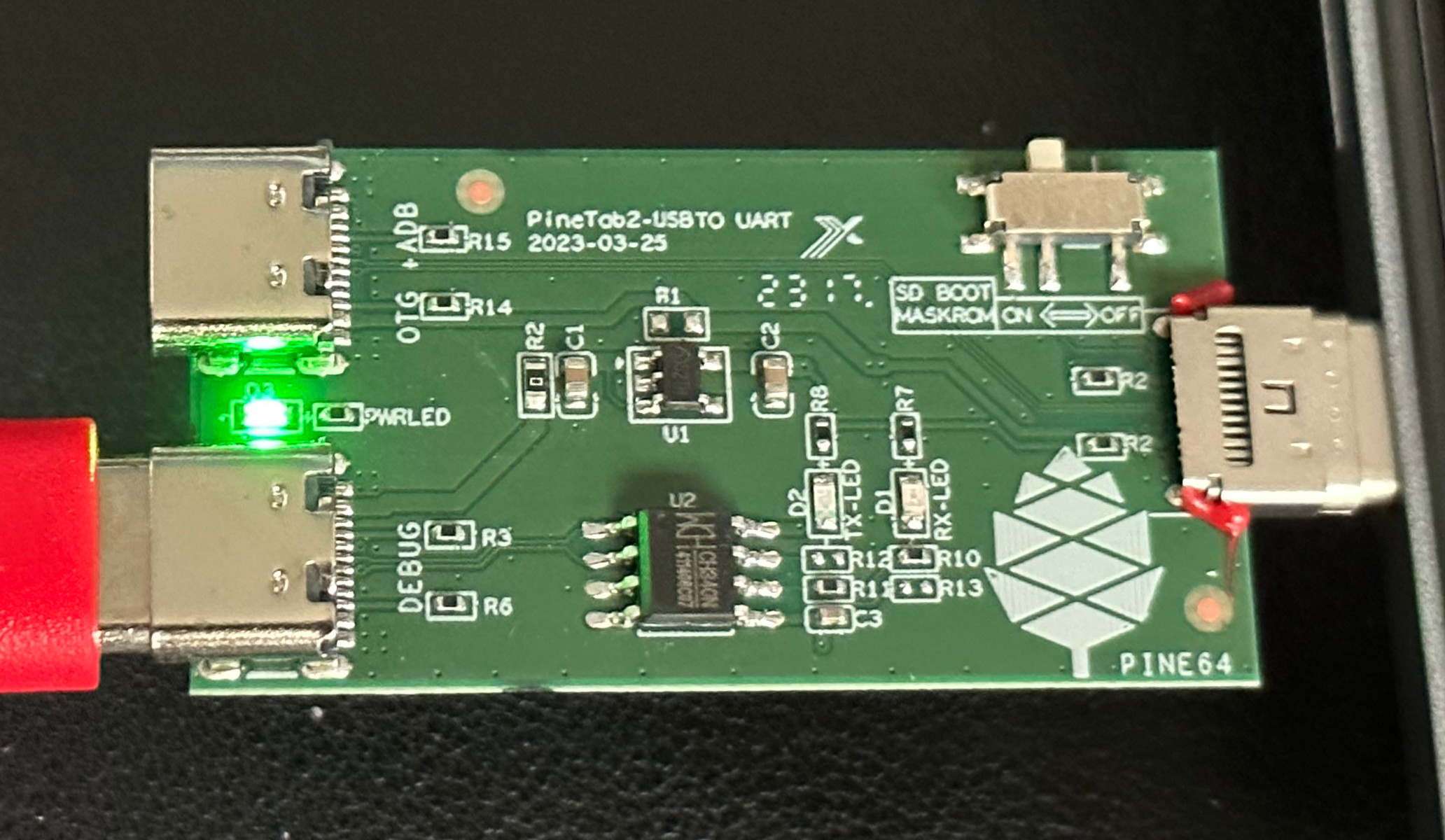Table of Contents
- No recovery effort was not required.
- Tunneling in with tio on the UART controller
- Finishing System Upgrades
- Installing StarFive’s Key Ring
1# ____ _ __ __ __ __ _
2# | _ \(_)___ ___ \ \ / / | \/ (_)_ _____ _ __
3# | |_) | / __|/ __|___\ \ / / | |\/| | \ \/ / _ \ '__|
4# | _ <| \__ \ (_|_____\ V / | | | | |> < __/ |
5# |_| \_\_|___/\___| \_/ |_| |_|_/_/\_\___|_|
2025-10-02: Back to Normal Operations #
No recovery effort was not required. #
Quickly running out of time to make this update, but nonetheless lets see what can get written down.
As the title indicates, everything was working except Gnome, which was the cause of the error messages that was previously seen the day before. This did cause one significant complication not previously forseen. Since the network-manager daemon is configured to run as a userlevel service, and the user was unable to "login", then the network-manager was not started. So, there was no way to tunnel into the tablet through the network.
Tunneling in with tio on the UART controller #
Thankfully, Pine64 foresaw this dilemna and provided the user with a solution, the PineTab USB UART Controller, and I
have to admit, it is pretty swanky. Using it gives one access to a console for early boot and kernel messages, then
switches over to TTY1 once systemd has started up. I imagine there is probably the option to send a reset command
and have the entire system reboot if need be. So, once it was connected, and the system was powered on, all that was
needed was for the user to use a serial terminal to connect to the device.

I have used a few of the serial terminal emulators out there. First, I started off with using cu, which was very
basic. Then I tried out minicom, which was feature packed, and really impressive, but had a set of keybinds I was
unfamiliar with. This time I tried out tio which is what pine64’s wiki reccommended, and
feel like I won the lottery. The keybinds were still similar to minicom, but easier to figure out, and the interface
was more intuitive than minicom’s. So I simply tunneled in.
1tio /dev/ttyUSB0
Immediately I was connected with TTY1 and I was back in business baby!
Fixing Gnome and Showing of Error Messages. #
Working the terminal was more cumbersome than usual, as wither the UART device or tio’s settings reduced terminal width to 80 pixels. As soon as I was logged in this error message begin appearing on the terminal.
1Skip gain error setting in scan status
There was no way to discover what was causing it from my experience, and eventually through the process of updating everything, it simply disappeared.
Finishing System Upgrades #
Assuming what caused Gnome to fail were the additional upgrades whose installation was previously postponed, apt full-upgrade --allow-insecure-repositories was run, and those packages was successfully installed. Once during the
installation process, a prompt asked if the user’s current settings for something should be kept, or should the new
system version be installed. In these instances, I have learned to have the two versions diffed to the console (usually
option D), and inspect the differences. Only then do I continue to choose one, and continue to through the
installation. Another error seen during installation was an error regarding missing drivers for the "VPU" device. Which
apparently was resolved in the next step.
Reinstalling Manufacturers Drivers #
The next step was more or less a measure of assurity. In order to make sure the upgrade process did not overwrite any of
the manufacturer’s provided drivers and kernel modules, they would be reinstalled, overwriting any modifications
performed by apt full-upgrade. These packages came with the tablet and were placed in the root user’s home directory
in a folder titled "pinetab-6.6". Well, actually they are located at pinetab-6.6/out, but who’s counting. I only was
able to attempt to install one of these, the "VPU" driver, before having my attention drawn elsewhere.
System Reboot and Closing up. #
When my thoughts returned to the task at hand I disovered the system had been issued the reboot command, which was successful.
Since the tablet was in another room, rather than get up and see if gnome successfully started up, I tested if the device was connected to the network, by tunneling into it with ssh. It was one of the small victories of the day to see the prompt show up after the connection was successful.
It appears like everything was successful, as there are no unusual error messages appearing in syslog, and no error messages are making their way into the terminal sessions. Gnome was confirmed to be working, and I was able to log in as usual.
Now that I have a functioning installation of Debian sid, next I need to set the tablet up for development and load all my personal dotfiles on it.
Installing StarFive’s Key Ring #
The only reason I remembered I had previously forgotten to add this, was because I had to repeat and do it again. It is
good to know how to do this, because apt-key is deprecated.
1# here is the url
2https://debianrepo.starfivetech.com/StarFive-debian-repo.key
3# Here is the command
4wget -qO- https://download.example.com/example-pub.gpg | gpg --dearmor | sudo tee /etc/apt/trusted.gpg.d/example.gpg >
5/dev/null